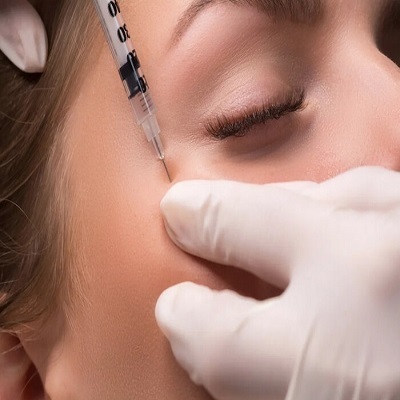Causes of Male Breast Enlargement and How Surgery Helps

Strong 8k brings an ultra-HD IPTV experience to your living room and your pocket.
Male breast enlargement, medically known as gynecomastia, is a condition that affects many men at different stages of life. This condition is more common than often assumed and can significantly impact a man’s self-image and emotional well-being. Gynecomastia is characterized by the enlargement of breast gland tissue in males and is often confused with fat accumulation, though the underlying cause is different. For those looking to restore a more contoured, masculine chest, gynecomastia surgery in Islamabad offers an effective and lasting solution.
Understanding Male Breast Enlargement
Gynecomastia occurs when there is an imbalance between the hormones estrogen and testosterone. Estrogen, although present in smaller quantities in men, promotes the growth of breast tissue. When estrogen levels rise or testosterone levels fall, breast tissue may begin to grow abnormally. This condition may affect one or both breasts and sometimes results in tenderness or swelling.
Common Causes of Gynecomastia
1. Hormonal Fluctuations
The primary driver of gynecomastia is hormonal imbalance. Testosterone typically suppresses breast tissue growth, but when estrogen outweighs testosterone—even slightly—it can stimulate breast enlargement. This imbalance may happen naturally or be triggered by other health factors.
2. Puberty
Teenage boys going through puberty often experience temporary gynecomastia due to rapid hormonal changes. While in most cases the condition resolves on its own within a few months to a couple of years, some teens retain excess breast tissue into adulthood.
3. Aging
As men age, testosterone levels tend to decline, while body fat increases, leading to higher estrogen production. This hormonal shift, especially when combined with reduced physical activity, can result in gynecomastia in older men.
4. Medications
Several prescription drugs can cause or contribute to gynecomastia. These include:
Anti-androgens used for prostate enlargement or cancer
Anabolic steroids and androgens
HIV medications (especially Efavirenz)
Anti-anxiety drugs like diazepam
Certain antibiotics
Ulcer medications like cimetidine
Chemotherapy drugs
5. Health Conditions
Some underlying health problems can affect hormone levels and trigger gynecomastia. These include:
Hypogonadism (underproduction of testosterone)
Hyperthyroidism (overactive thyroid)
Kidney failure
Liver disease, especially cirrhosis
Tumors in the adrenal glands or testes
6. Substance Use
Drugs and alcohol can also contribute to male breast enlargement. Substances known to increase the risk include:
Alcohol
Marijuana
Heroin
Amphetamines
Methadone
These substances can either influence hormone production or damage organs responsible for hormone regulation.
7. Obesity
Excess body fat can increase estrogen levels and lead to both fat-related and glandular breast enlargement. This condition is known as pseudogynecomastia when fat is the primary cause, though it often overlaps with true gynecomastia in overweight individuals.
8. Herbal and Dietary Supplements
Certain herbal products, such as those containing tea tree oil or lavender, have weak estrogen-like properties that may contribute to gynecomastia. Bodybuilding supplements with undisclosed hormones or prohormones can also disrupt hormonal balance.
Diagnosing Gynecomastia
Diagnosis typically involves a physical exam and medical history review. Doctors may also order blood tests to evaluate hormone levels and imaging studies like ultrasounds or mammograms to differentiate between fat and glandular tissue. In some cases, a biopsy may be needed to rule out breast cancer, although male breast cancer is rare.
How Surgery Helps
For men with persistent or significant gynecomastia that doesn’t resolve with time, lifestyle changes, or medication adjustments, surgery provides a highly effective treatment. Gynecomastia surgery, or male breast reduction, aims to remove excess glandular tissue, fat, and sometimes skin to achieve a flatter, more masculine chest.
Types of Gynecomastia Surgery
Liposuction
If the enlargement is mainly due to fat deposits, liposuction may be performed through small incisions. This method is less invasive and results in minimal scarring.
Excision
When glandular tissue or excess skin is present, excision is often necessary. This technique involves surgically removing the dense breast tissue through an incision, usually along the edge of the areola or chest fold.
Combination Technique
Many patients benefit from a combination of both liposuction and excision, especially when both fatty and glandular tissues are involved. This hybrid approach ensures a more comprehensive and aesthetically pleasing result.
Benefits of Gynecomastia Surgery
Improved Chest Contour: Creates a firmer, flatter chest profile
Enhanced Self-Esteem: Reduces embarrassment and boosts body confidence
Permanent Results: Eliminates the root cause when glandular tissue is removed
Minimal Downtime: Most men resume normal activities within a week
Recovery and Aftercare
Post-operative recovery is usually smooth. Patients may experience swelling, bruising, or mild discomfort, managed with prescribed medications. A compression garment is typically worn to support the healing process and reduce swelling. Most patients return to work within a week but should avoid strenuous activity for 4–6 weeks.
Is the Surgery Safe?
Gynecomastia surgery is considered safe when performed by a board-certified surgeon. As with any surgery, there are risks, including bleeding, infection, scarring, or changes in nipple sensation. Choosing a qualified and experienced provider significantly minimizes these risks.
Conclusion
Male breast enlargement can be a result of various factors ranging from hormonal shifts and medications to underlying medical conditions or lifestyle choices. While some cases resolve naturally, persistent gynecomastia often requires surgical intervention for permanent correction. For those seeking reliable and expert treatment, gynecomastia surgery in Islamabad at a reputable facility ensures both safety and excellent cosmetic outcomes. To explore your treatment options and work with experienced professionals, consult the trusted team at SKN Cosmetics clinic—a leading name in cosmetic and reconstructive procedures in Pakistan.
Note: IndiBlogHub features both user-submitted and editorial content. We do not verify third-party contributions. Read our Disclaimer and Privacy Policyfor details.




